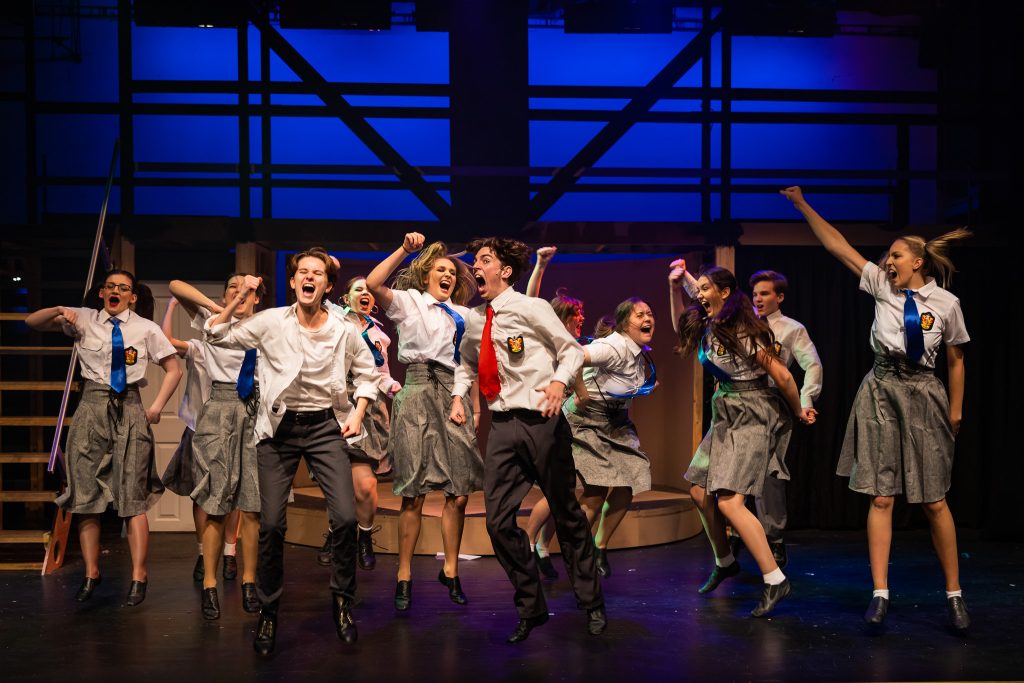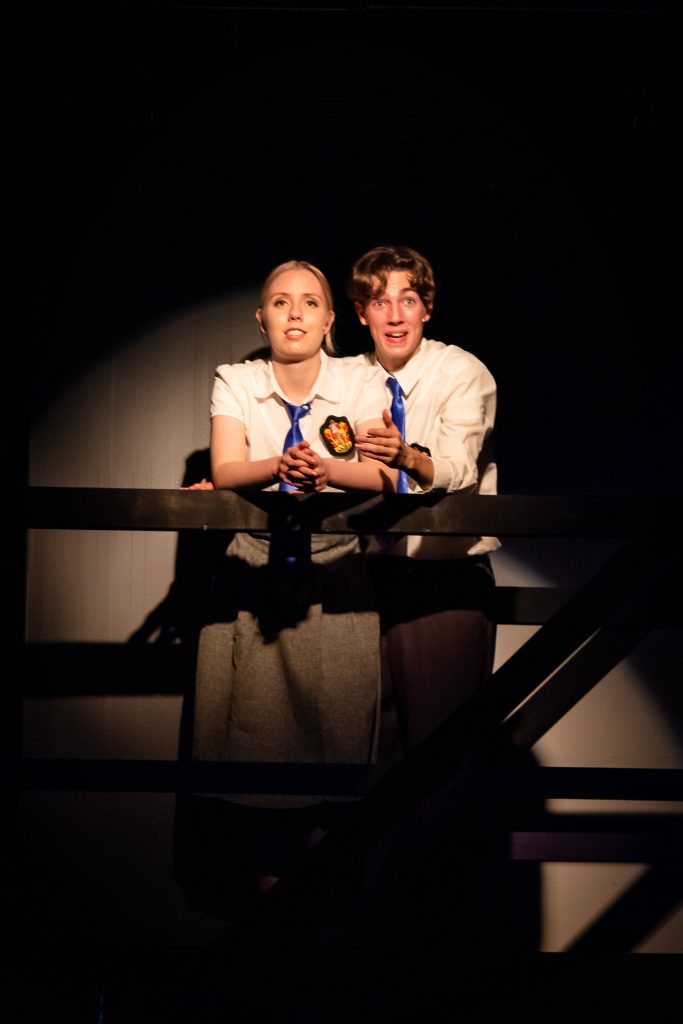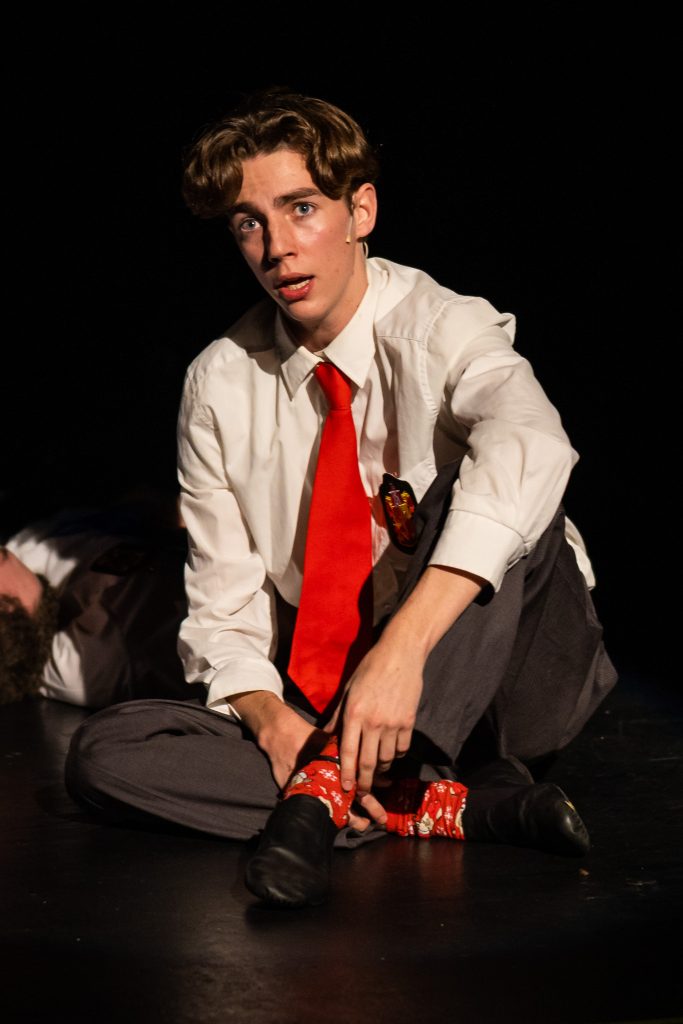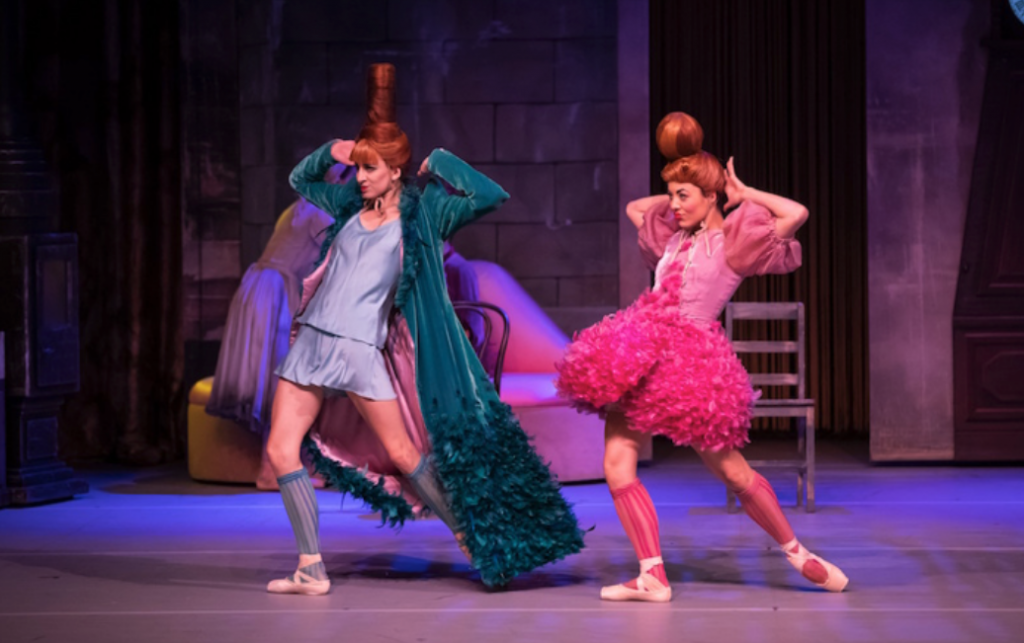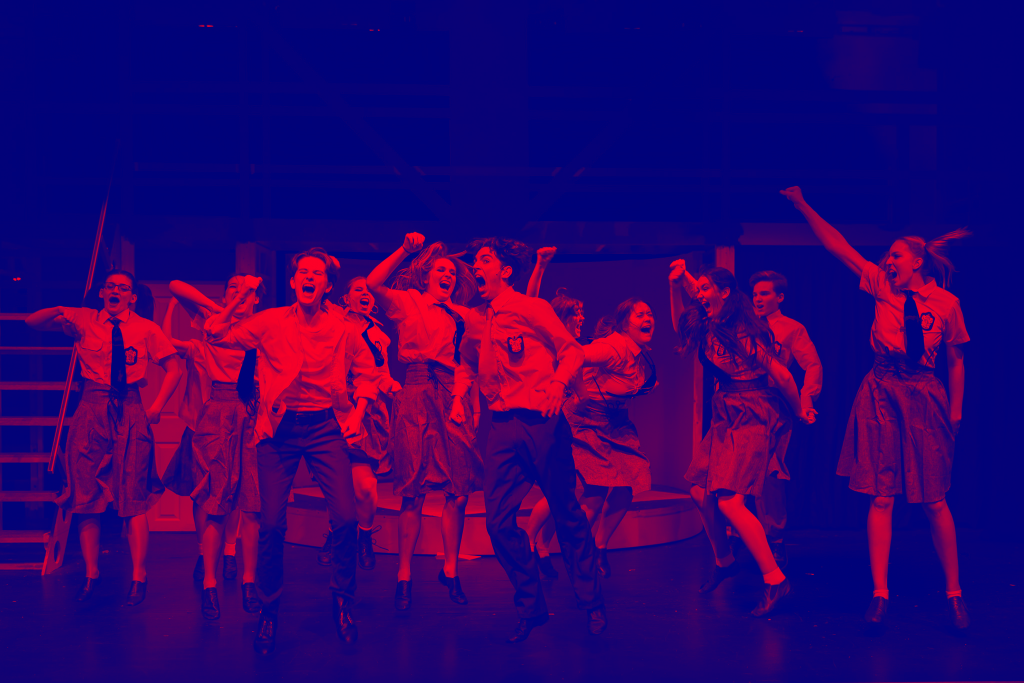
‘Our House’ // Brisbane Arts Theatre
‘Our House’ was vibrant.
Brisbane Arts Theatre (BAT) has been thriving in Petrie Terrace for the past 80+ years, producing theatre accessible to anyone to be a part of or to watch and enjoy. After the 2020 season of ‘Our House’ was cancelled, BAT has brought back the thrilling and heartfelt story, which explores themes of love, loss, family, responsibility and growing up.
First performed in 2002 and winner of Olivier Award for Best New Musical in 2003, ‘Our House’ is a jukebox musical featuring the music of the English Ska band, Madness, and one song ‘It Must Be Love’ by Labi Siffre. With a book written by playwright Tim Firth, the production follows the life of schoolboy Joe Casey, who on the night of his 16th birthday makes the decision to break into a building development site to impress his girlfriend, Sarah. When the police show up, Joe has to make a decision that will change his life.
Overseen and narrated by Joe’s deceased father, Joe is shown what could happen in the future, splitting his life into two alternate paths; the “Good Joe” who gives himself up and the “Bad Joe” who escapes and leaves Sarah to run from the police. Over a period of seven years and these two paths, Joe deals with the consequences of that night: following either a life with a criminal record, social exclusion and fighting to save his family home or a life of success, glamour, and fighting to demolish his family home, with tragic consequences.
The main technical aspect of this production was the use of a revolve stage with half of a circular wall fixed to it and incorporated as part of the set. It was used many times to extend and separate the stage space and cleverly emphasise events. An example of this was during the song ‘Embarrassment’: Joe is seen for short periods of time inside the stage while he is in job interviews. The revolve then moves to reveal him and a possible employer, and continues to rotate until he is no longer seen. Using this effect highlights the feeling of constantly going in circles. That is, going from job interview to job interview, as Joe does throughout this part of the show.
Another technical aspect that aided the story was lighting designed by Fiona Black. Using the white wall on the back of the theatre to her advantage, Black chose blue or red colouring to surround either “Good Joe” or “Bad Joe” respectively. Black also projected blue lighting on the wall when “Bad Joe” was seen on stage to aid in contrast and possibly highlighting good choices that he was making.
Aside from the white wall, Black further made some witty choices when it came to lighting. During the song ‘It Must Be Love’, when “Good Joe” was singing, the actor had blue light illuminating him. When Sarah was singing, she was illuminated in purple lighting (a mix of red and blue), symbolising that she will be a part of both paths.
Set design by Kiel Gailer and Tim Pierce, was effective. Stairs on stage right led up to a catwalk that traversed the entire stage with a purple banister; a front door next to the stairs led into the Casey family home and other settings throughout the show, and the revolve wall that was covered in band posters and graffiti art set the space to feel like Camden, England.
Costume design by Frances Foo showcased her attention to detail with her clothing choices, and they equally fit the era and aided in portraying each character and alternate path. Some examples include Emmo and Lewis both wearing their school uniform in a more relaxed fashion in comparison to Joe as well as Joe’s alternating coloured school ties (red and blue) and alternating clothes for “Good Joe” and “Bad Joe”. Foo also made many small detailed changes in Sarah’s costumes, including a red rose in her hair in “Bad Joe’s” path and a white rose in “Good Joe’s” path. Foo selected distinct costumes for each path; selecting red-themed options for every character in “Bad Joe’s” path to surround him in that nuanced colour, to both represent his path and to aid the audience in differentiating the paths.
Directed and choreographed by Ava Moschetti, with assistance from John Boyce (the Artistic Director at BAT), Moschetti has made her mainstage directorial debut. Taking inspiration and influence from the Madness music videos and the pop culture of the time, she crafted energetic and captivating choreography that both aided in telling the story and brought fun references and vibrant energy to the stage. A highlight of Moschetti’s choreography was ‘Baggy Trousers’, using rolling school desks throughout the first half of the song while Joe and his classmates are still in school making mischief. After they’ve finished school, they jump and dance with each other in celebration in a big group of organised chaos, bringing loads of energy to the stage and to the song, making it a standout piece in the show. It is evident that Moschetti and Boyce conducted intensive research when it came to directing this piece, aiming to and successfully replicating the mood and feel Madness brought to their audience with the release of their music.
Music direction by Gabby Fitzgeraldbrought the familiar “spoken” quality known from Madness’ music to the stage. With little harmony throughout the show, Fitzgerald polished the separate parts to give the familiar music the extra kick it needed to be both nostalgic and fresh to audiences.
Oliver Childs played Joe Casey, the diamond in the rough who has a difficult path ahead of him. Childs is a fresh face to BAT but is clearly no stranger to the stage. He was excellent at portraying both “Good Joe” and “Bad Joe” and switched between the two so seamlessly that it almost felt natural. Childs showcased a strong performance that was incredibly authentic.
The girl next door, Sarah, was portrayed by Kyra Stratford. Stratford brought a gentle but strong Sarah to the stage, revealing bright vocals that moved the audience throughout her journey and performance.
Natalie Mead was the fiery and loving Kath Casey, and Shaun King played the narrator and overseer of the story, Joe’s dad. Both Mead and King brought the family figures to life, with Mead portraying a cheeky and fun Kath with some beautiful vocals and King portraying Joe’s father as a desperate man encouraging his son to make the best choices in life.
The Moreton sisters, played by Eloise Newman (Angie) and Isabella Farry (Billie), are Sarah’s best mates who are sassy and full of life. Newman and Farry complemented each other onstage very well and created a strong sisterly bond.
Emmo and Lewis were the comedic double that the audience couldn’t get enough of. With Oliver Catton as Emmo and Devon Henshaw as Lewis, they are boys who were taken in by Joe’s mum. Emmo is a big kid who would chase sticks if you threw them at him, and Lewis is a sensitive boy with more exposed moral values. Catton and Henshaw were a great duo who had tremendous energy together and never failed to make the audience laugh.
Skye Schultz as Reecey was a standout performer, portraying skill in physicality and authenticity. Reecey was the classic charming force of darkness who manipulated Joe into making some bad choices in his life. Schultz commanded the stage whenever they were on it and brought a strong and sinister Reecey to the stage.
The ensemble in ‘Our House’ brought tremendous energy to the stage, really bringing the story to life. Additional standouts included Marita Bellas Miles, who brought detailed and bucket loads of energy to her performance and Ewan Gareen acting as Joe’s double whenever the counterpart was needed on stage. Gareen matched the energy and was a pivotal part of the story.
‘Our House’ is a captivating and thrilling story that comes full circle, bringing a fresh and unique approach to the jukebox musical genre. This show is one audience members will love as it puts perspective on the choices one makes in their lifetime.
‘Our House’ performs until Saturday, 21 August 2021 at Brisbane Arts Theatre. For more information visit Brisbane Arts Theatre’s website.




